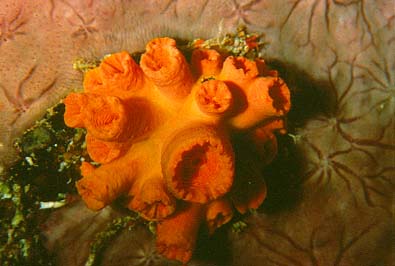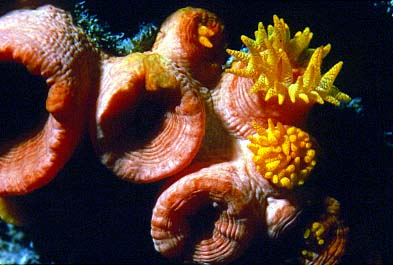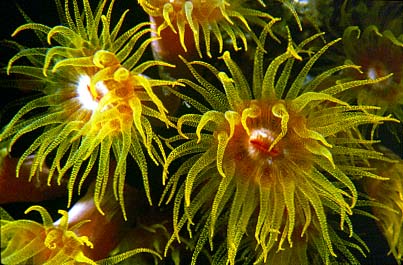photographs by Jan C. Post
| <-- | | 0 | 1 | 2 | 3 | 4 | 5 | 6 | 7 | 8 | 9 | 10 | 11 | 12 | 13 | | --> | |||||||||

The strawberry coral Tubestrea during the day when the polyps are withdrawn inside the protective skeleton covered by a red "communal skin" with the individual polyps inside the small "craters" for protection. Most coral eaters are diurnal (Bonaire).
The sun goes down and the polyps start to pump themselves full of water to extend their tentacles to catch the animal plankton which comes up at night from the deeper water layers to eat the plant plankton which has grown in the light during the day (Bonaire).
Half an hour later all polyps are fully extended. Clearly visible are the ridges of little stinging cells on the tentacles used to paralyze the plankton. These stinging cells are like small harpoons which shoot out when a plankton animal touches the "trigger hair".
| <-- | | 0 | 1 | 2 | 3 | 4 | 5 | 6 | 7 | 8 | 9 | 10 | 11 | 12 | 13 | | --> | |||||||||

